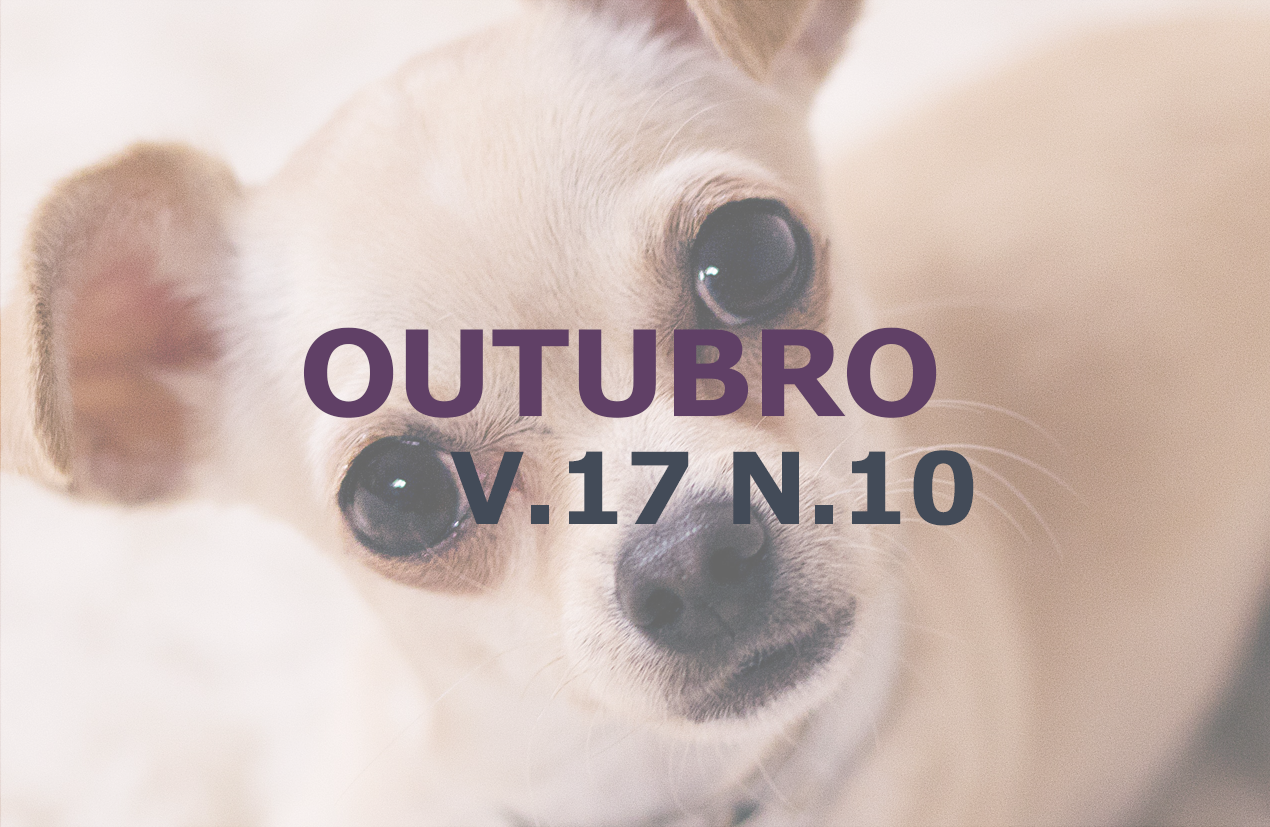Immobilization of fracture in the region of the tibia and fibula with a Thomas splint on a ram
DOI:
https://doi.org/10.31533/pubvet.v17n10e1461Keywords:
bone callus, sheep, radiographyAbstract
Cases of long bone fracture are quite common in the clinical routine of large animals owing to the territoriality, character and management of the herd. Most affected animals are euthanized because of their low zootechnical value or the high added value of treatment. This paper reports the case of a male breeding sheep of the Santa Ines breed who was treated at the clinical school of the Pontifical Catholic University of Goiás (PUC-GO) for its inability to stand on the left hind limb, as well as the presence of an edematous region that appeared after a fight with a male breeding goat. Imaging examinations revealed a multifragmentary closed fracture of the tibia and fibula in the left pelvic limb. Analgesia was administered using meloxicam (0.6 mg/kg intravenous for 3 consecutive days), the limb was immobilized with plaster and bandages for 21 days. After this period, radiographic examination revealed retainer instability, prompting a new approach, namely the use of a Thomas splint for 37 days. Subsequently, another radiographic image was obtained, which showed bone synthesis with bone callus formation. After the splint was removed, the animal had no difficulty walking or performing activities such as feeding and lying down, and its reproductive function was not compromised. Thus, the use of this immobilization method was confirmed as a treatment for fractures in breeding animals because small ruminants have great capacity for bone regeneration, and because the Thomas splint is easy to use and has low cost of production and maintenance.
References
Câmara, A. C. L., Calado, E. B., Antunes, J. M. A., Oliveira, C. M. M., Afonso, J. A. B., & Costa, N. A. (2014). Tratamento conservativo e cirúrgico em 22 ruminantes com fraturas em membros. In Pesquisa Veterinária Brasileira (Vol. 34, pp. 1045–1050). SciELO Brasil. https://doi.org/10.1590/s0100-736x2014001100001.
Gargano, R. G., Benesi, F. J., Birgel Júnior, E. H., Della Libera, A. M. M. P., Gregory, L., Sucupira, M. C. A., Ortolani, E. L., Gomes, V., & Pogliani, F. C. (2013). Estudo retrospectivo das afecções locomotoras em ruminantes atendidos na Faculdade de Medicina Veterinária e Zootecnia da Universidade de São Paulo entre 2000 e 2012. Brazilian Journal of Veterinary Research and Animal Science, 50(4), 286–293.
Joy, B., & Venugopal, S. K. (2014). Successful management of metatarsal fracture in a goat using external skeletal fixation. International Journal of Science and Research, 3(7), 357–359.
Martins, E. A. N., Galera, P. D., Ribas, J. A. S., & Silveira, D. (2001). Gesso sintético e pinos transcorticais na redução de fratura de tíbia em uma bezerra. Ciência Rural, 31(1), 145–148. https://doi.org/10.1590/s0103-84782001000100024.
Paretsis, N. F., Andrade, F. S. R. M., Spagnolo, J. D., Ojeda, J. A. F., Nóbrega, F. S., Benesi, F. J., Corrêa, R. R., & Zoppa, A. L. V. (2016). Utilização de fixador externo tipo I para correção de fratura de olécrano em caprino: Relato de caso. PUBVET, 10(12), 889–894. https://doi.org/10.22256/pubvet.v10n12.889-894.
Paretsis, N. F., Baccarelli, D. C., Lhamas, C. L., Alonso, D. C., Nóbrega, F. S., & Zoppa, A. L. V. (2016). Ostectomia de tíbia em modelo experimental ovino para estudo de regeneração óssea. Ars Veterinaria, 32(1), 1–8.
Pinheiro, C. A., Coura, A. G., Vieira, A. R. S., Oliveira, K. A. P., Vasconcelos, P. B. O. A., Neves, M. R. M., & Figueiredo, E. L. (2023). Lesão na região metacarpiana do membro torácico esquerdo de bezerra Gir decorrente de contenção para pesagem. Ciência Animal, 33(1), 161–166.
Pyles, M., Costa, J. L. O., Barcelos, F., Garcia, G. R., & Menezes, A. T. (2005). Fratura de úmero em bezerro. Revista Científica Eletrônica de Medicina Veterinária, 5, 1–4.
Tauffer, C. A. C., & Araújo, K. C. (2022). Imobilização com muleta de Thomas modificada e gesso para reparação de fratura metacarpiana em bezerra nelore - Relato de caso. Revista Ibero-Americana de Humanidades, Ciências e Educação, 8(9), 1292–1311.
Downloads
Published
Issue
Section
License
Copyright (c) 2023 Izadora Mazagão Veloso, Milenna Karoline Rodrigues Ferreira, Maria Ivete de Moura, Arthur Francisco Junior, Gustavo Lage Costa, Alessandro Rodrigues Costa Filho

This work is licensed under a Creative Commons Attribution 4.0 International License.
Você tem o direito de:
Compartilhar — copiar e redistribuir o material em qualquer suporte ou formato
Adaptar — remixar, transformar, e criar a partir do material para qualquer fim, mesmo que comercial.
O licenciante não pode revogar estes direitos desde que você respeite os termos da licença. De acordo com os termos seguintes:
Atribuição
— Você deve dar o crédito apropriado, prover um link para a licença e indicar se mudanças foram feitas. Você deve fazê-lo em qualquer circunstância razoável, mas de nenhuma maneira que sugira que o licenciante apoia você ou o seu uso. Sem restrições adicionais
— Você não pode aplicar termos jurídicos ou medidas de caráter tecnológico que restrinjam legalmente outros de fazerem algo que a licença permita.





